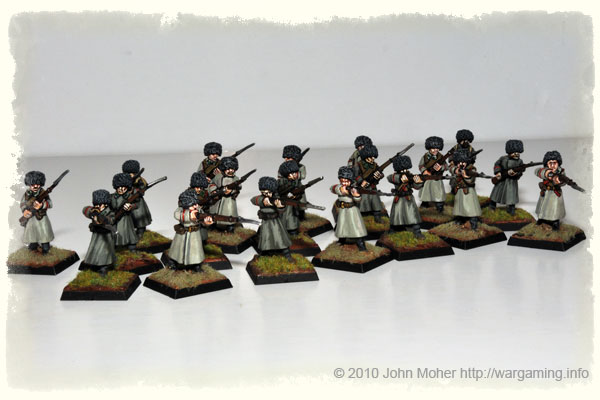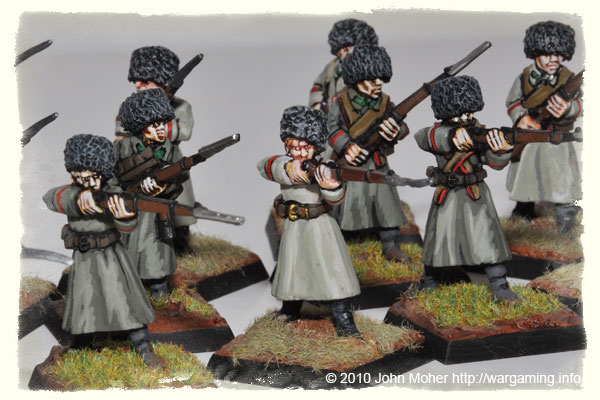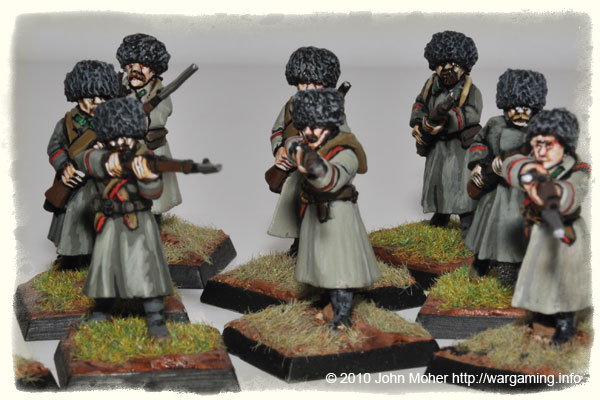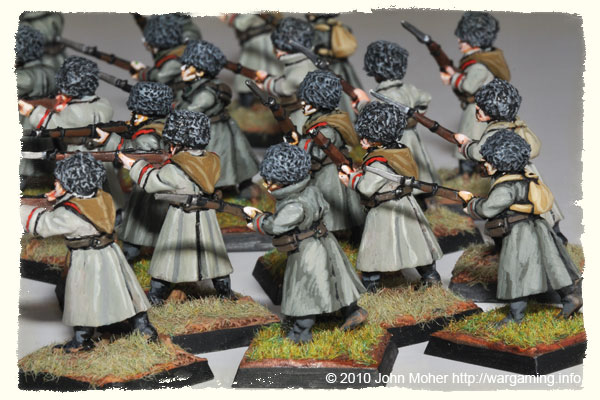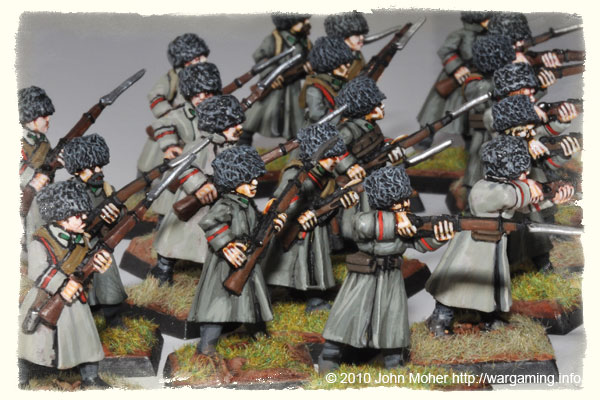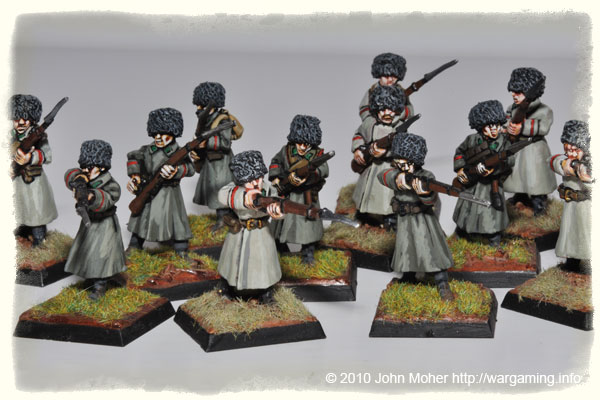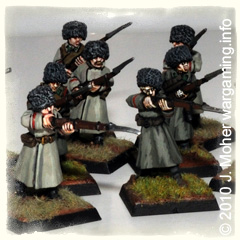
Following on from the World War 1 Russian Artillery my unit of Siberians is now ready for action – although I plan to ultimately rebase these off those dreadful plastic Games Workshop Warhammer bases and onto good quality Litko plywood ones. Although the could actually be nearly any Russian Infantry unit in winter clothing (e.g. Regiments from Moscow wore similar dress just with less ‘woolier’ papaha hats). As with many of my WW1 Russians these were an opportunity buy from another Colonial/WW1 Gamer, and as a result most of the figures were painted to a very good standard. However as with the artillery battery some additional touch up work has been done to these chaps. Siberian Rifles (all Siberian Regiments were designated Rifle Regiments rather than Infantry or Line Regiments) and in cold weather typically wore a great coat called a shinel (which was often a greyish-brown colour).
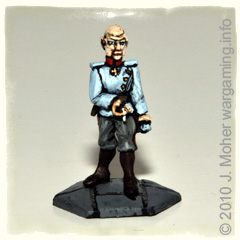
If you compare the original photos in The Carpathians Will Rumble you will see that there was a unit of ten figures in dark grey/green great coats and black papaha style woolly hats; while the second unit of 10 (not pictured) were in white great coats & white papaha; and painted in a slightly different style to the majority of the Russian figures in my army. As I use standard 20-fig TSATF units to represent a Company I needed to get these two merged together. The white uniformed guys now have black fur caps and have had their coats weathered to darken them down so the 20 figs now blend together as a single unit with a nice variation in their great coat colours to add a campaign feel.
In addition Siberian units (and most other Russian units in Cold Weather) wore bashlik cowls – this is a separate hood-like article that is worn over the shoulders and it’s long flaps crossed over the chest and tucked into the waist belt (or occasionally wrapped around the neck as an improvised scarf). It served to provide an additional cover over the woolly Siberian hat (the equivalent of the Russian papaha) in bad weather, but on some also featured coloured piping and other regimental or Ceremonial distinctions. These are well detailed on some of the Copplestone Figures so as part of the touch up these have been detailed and where appropriate piping colours added for some variety (see photos below). Collar patches have also been updated with a relevant service/regimental colour.
Some of the Copplestone Figures are also depicted with small bag-style haversacks – a non-standard type of equipment. Finally the Red piping on the cuffs is a bit of artistic licence – it was present on the 10 ‘white uniformed’ figures, so I kept it for colour and the friend who did the touch up painting on my WW1 Russians added it to the remaining figures in the unit. These chaps are now ready for plenty of service in the Carpathians/Poland, Caucasus, and ultimately the Back of Beyond!
You can find a reasonable amount of good basic information on the Siberians in Osprey’s Men-at-Arms 364: The Russian Army 1914-18.
